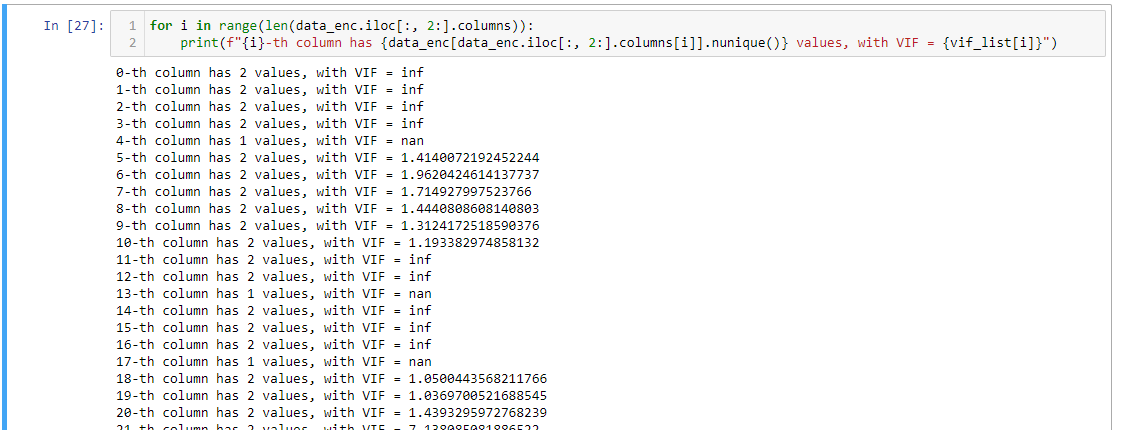I am comparatively new to Python, Stats and using DS libraries, my requirement is to run a multicollinearity test on a dataset having n number of columns and ensure the columns/variables having VIF > 5 are dropped altogether.
I found a code which is,
from statsmodels.stats.outliers_influence import variance_inflation_factor
def calculate_vif_(X, thresh=5.0):
variables = range(X.shape[1])
tmp = range(X[variables].shape[1])
print(tmp)
dropped=True
while dropped:
dropped=False
vif = [variance_inflation_factor(X[variables].values, ix) for ix in range(X[variables].shape[1])]
maxloc = vif.index(max(vif))
if max(vif) > thresh:
print('dropping \'' + X[variables].columns[maxloc] + '\' at index: ' + str(maxloc))
del variables[maxloc]
dropped=True
print('Remaining variables:')
print(X.columns[variables])
return X[variables]
But, I do not clearly understand, should I pass the dataset altogether in the X argument's position? If yes, it is not working.
Please help!

